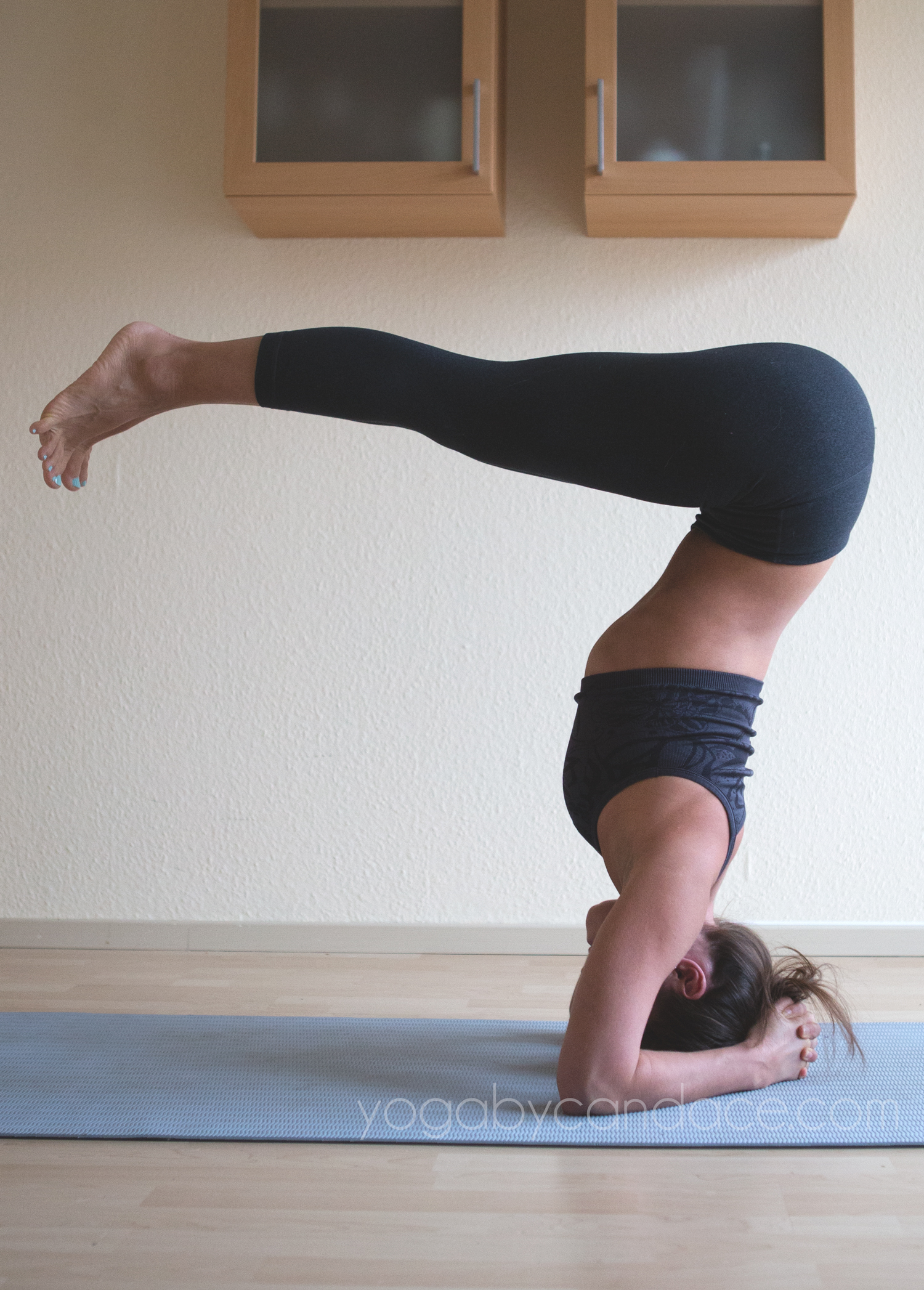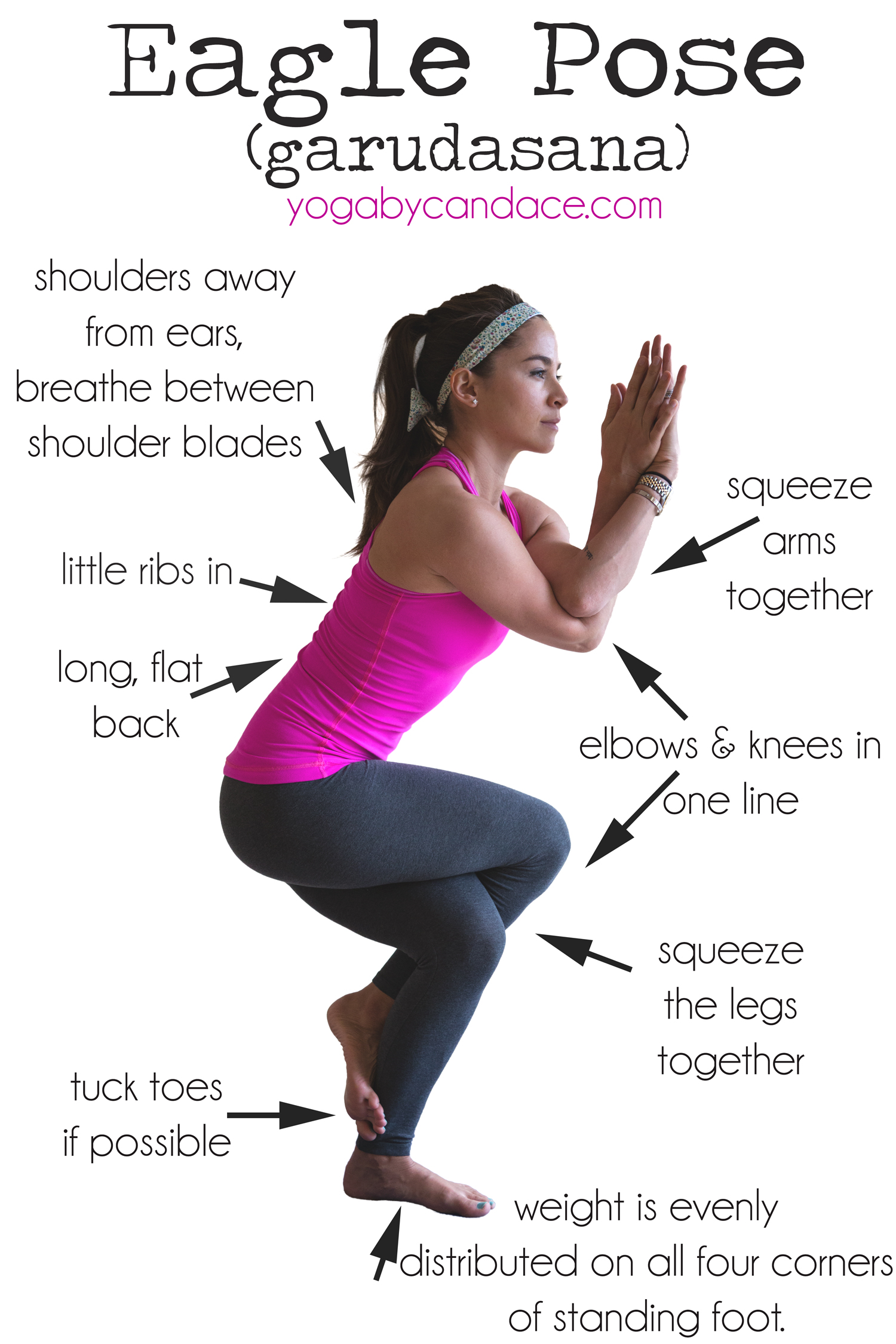Welcome to this week's installment of Ask a Yoga Question. Today's questions include what to do for tight shoulders, what yoga poses to do when your ankle is out of commission, how to know when to move on in your practice, and how to do eagle pose. Keep your questions coming (or leave one in the comment section below)! I don't know the answer to every yoga question, but I'm happy to share what I do know.
Question 1: Hi Candace, I've been practicing yoga as much as I can for the past year and a half. I've noticed that I have very tight shoulders. I have a really hard time opening up for poses like camel and upward (reverse) plank because my shoulders just don't cooperate. Are there any poses I could work on that would help open them up? Thank you!
Answer 1: Hi! These poses in particular not only require shoulder flexibility but also an open chest. One of the biggest lessons I learned in yoga teacher training was that everything in the body is connected, so if you work on opening up your chest, you'll also open up the shoulders as well. The three poses above should be helpful. Just remember to breathe throughout each pose, and always work within a pain-free range. Flexibility takes time, so try to stay with it- a little stretching each day and it will eventually come.
Headstand variation
Question 2: I fractured my ankle some weeks ago, and now I'm finally getting back into yoga, though I cannot put any weight on my right foot yet. I use a pillow under my foot for support and some poses I do on one leg - like sun salutations.. so it's a little challenging at the moment! I could use some inspiration!! Thanks! :)
Answer 2: Oh friend, I feel for you! I had an ab injury last summer (that came back this year around November) - so brutal! But, we always have a choice. Injuries offer up an opportunity to focus on what we don't normally do. Maybe your body just needs a rest. Or maybe you should focus on the more subtle aspects of yoga like meditation. Or, so long as your doctor says it's ok, maybe you should focus on the physical practice that doesn't require any weight on the feet, like inversions. Maybe now is a good time to work on headstands, forearm stands and shoulder stands. Try to listen to your body and honor what it needs.
Question 3: Let me begin by saying that I am a total beginner. I am trying to build strength and progress to the more advanced poses over time, but it is difficult to know where to start and when to up the intensity. I do have bad knees (terrible knees), but I am willing to try anything you suggest to help me improve. Thank you!
Answer 3: Good for you for adding a little yoga to your life! In my opinion, as a beginner you can't beat going to an actual studio. You'll learn so much and a teacher will be right there to offer modifications for those knees, and help adjust you to keep you in proper alignment. If you're up for that, my post on your first yoga class might help. If you're not up for going to a studio, check out my video for tips for absolute beginners that explains the basics of the most common poses, and 7 essentials for new yoga students. Yoga teaches us to really listen to our bodies. If you tune in to how your body is responding to the yoga practice, you'll know when you're ready to move on to more a more intense practice. Truly, no one can really say for sure except for you. Trust yourself, listen to your body, and with lots of yoga your practice will improve.
Pin it! How to do eagle pose.
Wearing: F21 leggings, lululemon cool racer tank (review here), Mizu bow tie as headband.
Question 4: I am interested in the eagle pose. I am totally a beginner, I only do yoga for specific things, like your yoga for stress video or when I have tension in my neck and shoulders. Is this a difficult pose? Is it attributed to something? How should I even attempt to do this, and how often should I do it, or should it be done with other poses? Sorry if I sound ignorant, I don't even know if I'm asking the right questions! I am just a newbie!
Answer 4: You absolutely do not sound ignorant! Good for you for doing yoga in times of stress! Eagle pose is really detoxifying because it cuts off circulation with the compression in the arms and legs, and then when you release the pose new blood comes rushing in. Level of difficulty is something that varies by person. I've seen beginners get right into it without any problems, and I've seen seasoned yoga students struggle with it - so it really depends on the flexibility in the hips and the ability to cross the arms- don't worry about that so much, start where you are and don't think about it. So to get into it, start standing, then bend the knees and cross the right over the left. Try to get the toes curled around the standing calf, but don't worry if you can't get them there yet. Take the arms out to your side and cross the left over the right. Check out the tips above for more details. Breathe 5-7 full, deep breaths on each side, and feel free to do it as often as you like. I like to work it in with other balancing poses (here's a video sequence of balancing poses). Hope that's helpful.
PS- More yoga questions answered.



